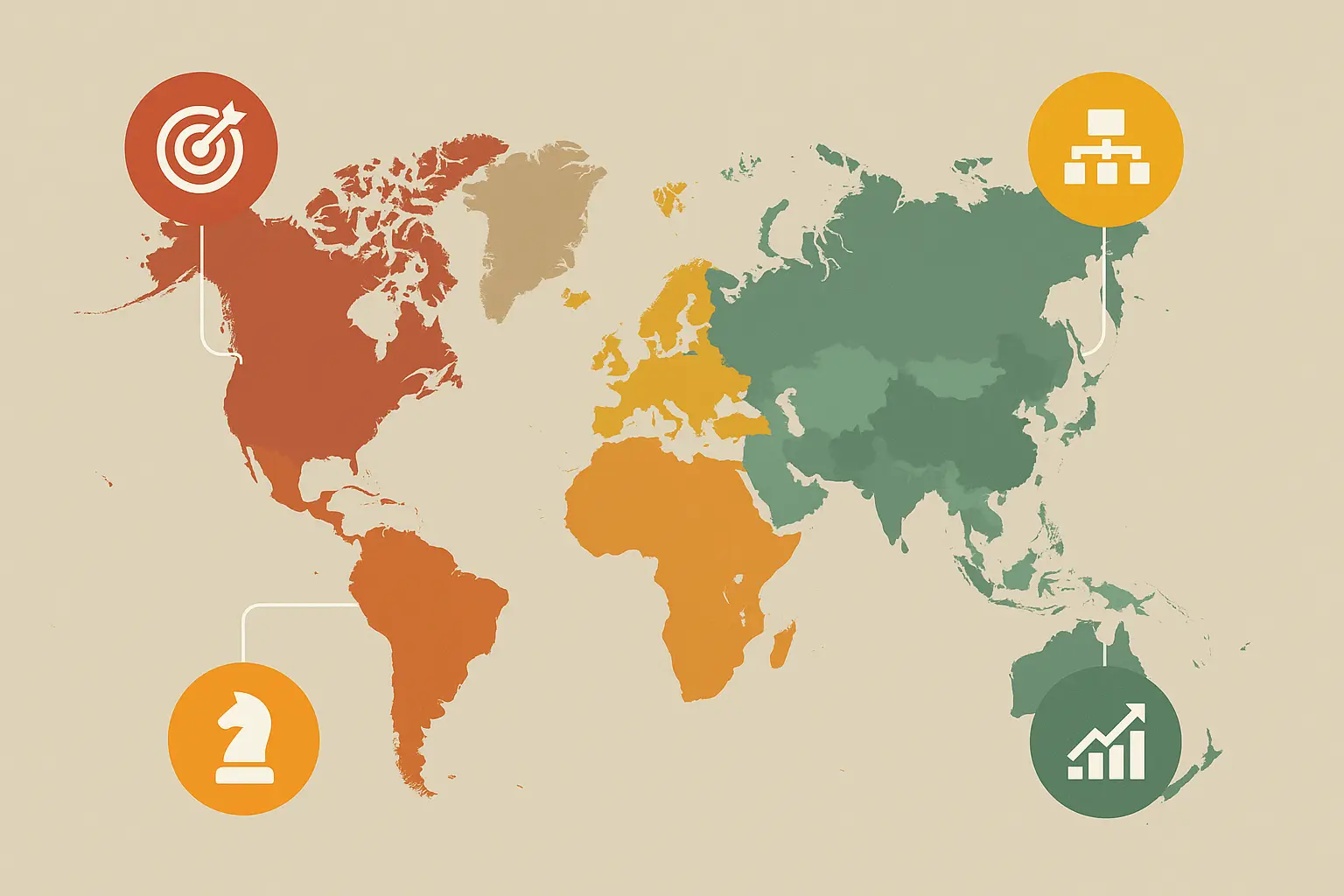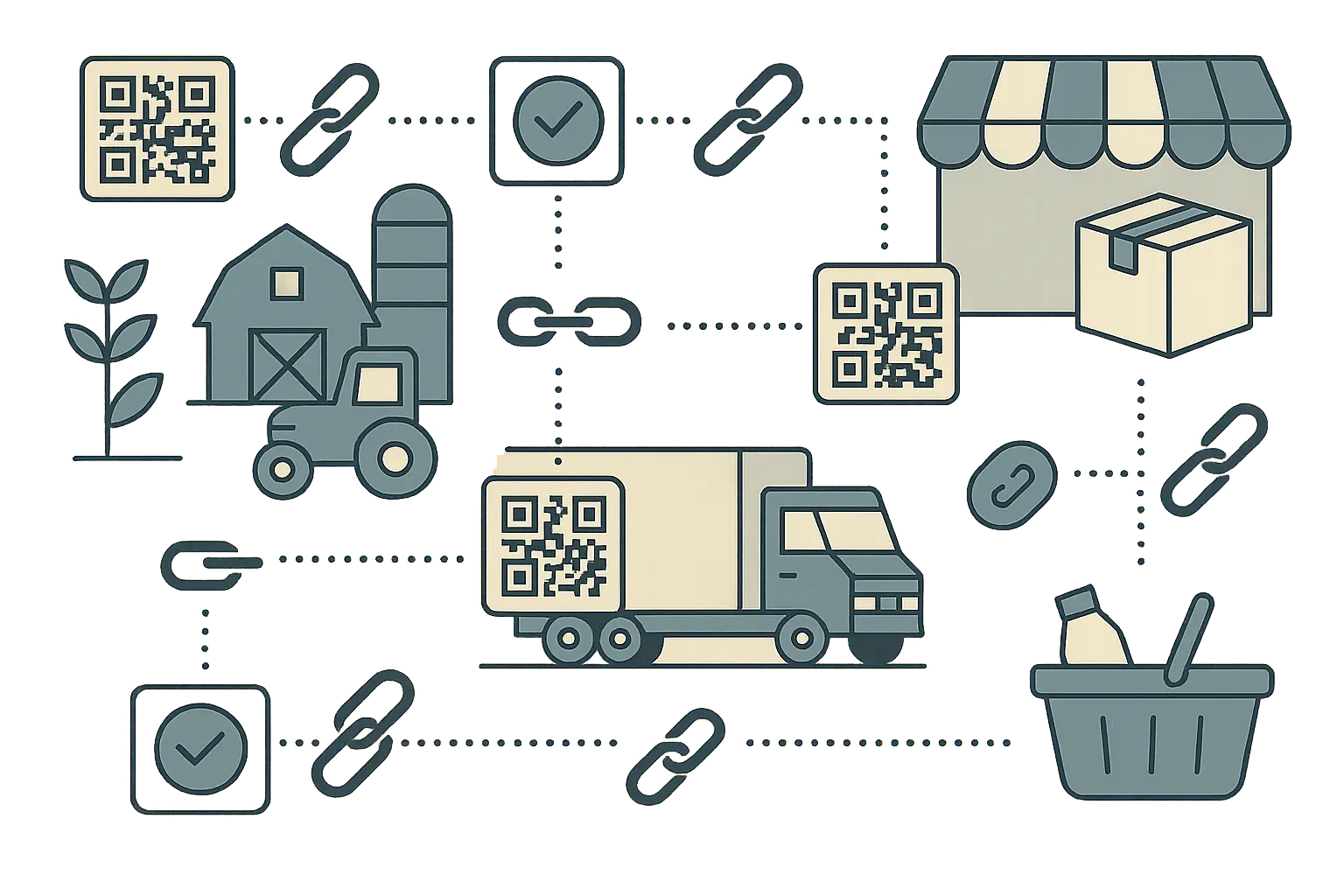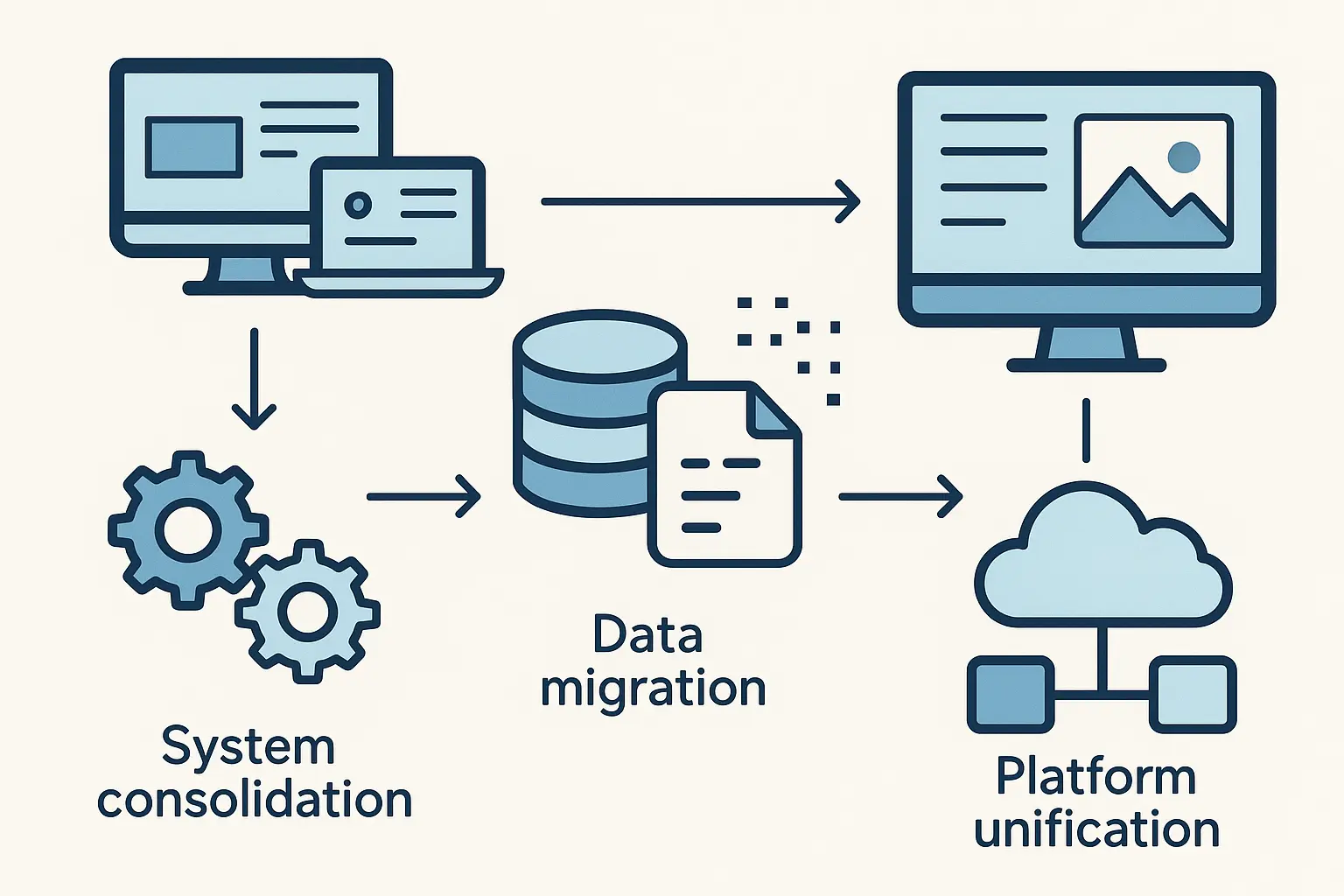When I first learned that Nestlé manages over 2,000 brands in 189 countries, my head nearly exploded. The sheer complexity of it all is mind-boggling – we’re talking about generating over $200 million in business value through marketing initiatives that span everything from baby food to pet treats to premium coffee. Honestly, Nestlé’s journey is like a masterclass in “how to screw up spectacularly and somehow bounce back stronger.”

Table of Contents
-
Historical Marketing Controversies and Crisis Management
-
Strategic Brand Portfolio Management
-
Supply Chain Marketing and Transparency
-
Market Research and Consumer Insights Application
-
Financial Performance and Marketing ROI Analysis
-
Final Thoughts
TL;DR
-
The 1970s infant formula crisis taught us that aggressive marketing without ethical consideration can destroy decades of brand building overnight
-
Managing 2,000+ brands requires balancing global consistency with local market needs – there’s no one-size-fits-all approach
-
Social media transformed crisis management from reactive damage control to proactive reputation monitoring
-
Supply chain transparency isn’t just operational excellence anymore – it’s become a powerful marketing differentiator
-
Consumer research methodologies must integrate cultural intelligence to succeed across diverse global markets
-
Marketing ROI analysis becomes exponentially more complex when managing cross-brand synergies and regional variance
-
Digital transformation requires omnichannel thinking that connects every customer touchpoint seamlessly
Historical Marketing Controversies and Crisis Management
Look, I’ve been studying marketing long enough to see companies make some truly spectacular mistakes, but Nestlé’s infant formula crisis from the 1970s? That’s in a league of its own. It’s basically a masterclass in “How to Tank Your Reputation 101.”
Here’s what really gets me about this whole mess – it wasn’t some overnight disaster. This thing built slowly, like watching a train wreck in slow motion. Nestlé’s marketing teams were treating developing countries like they were just another rich Western market. They had sales reps dressed as nurses (seriously?), handed out free samples through hospitals, and pushed formula as somehow better than breastfeeding.
Now, I’m not saying they woke up one day and decided to harm babies. But man, the lack of awareness about what was actually happening on the ground is staggering. When those free samples ran out, mothers couldn’t afford to keep buying formula. Even worse, they’d mix it with contaminated water or water it down to make it last longer.
Recent leadership changes at Nestlé highlight the ongoing importance of corporate governance in marketing organizations. In September 2024, Nestlé dismissed CEO Laurent Freixe after an undisclosed romantic relationship with a direct subordinate according to Just Food, demonstrating how personal conduct issues can impact corporate reputation and marketing leadership continuity.

The Infant Formula Crisis: A Watershed Moment in Marketing Ethics
The 1970s infant formula controversy fundamentally changed corporate marketing ethics forever. I’ve studied this case extensively, and it’s impossible to overstate how dramatically it changed marketing practices across entire industries.
Origins and Escalation of the Crisis
The trouble started when Nestlé’s marketing teams treated developing markets exactly like wealthy countries. What they didn’t account for was the reality on the ground – mothers who received free samples would stop breastfeeding, but when the samples ran out, many couldn’t afford to continue buying formula.
Here’s a concrete example that still gives me chills: In Kenya during the late 1970s, hospitals reported a 300% increase in infant malnutrition cases in regions where Nestlé had distributed free formula samples. Three hundred percent! That’s not a statistical blip – that’s a humanitarian crisis. Mothers who couldn’t afford continued purchases began diluting the formula with unsafe water, leading to widespread diarrheal diseases and malnutrition among infants.
Global Boycott Movement and Its Impact
The boycott that followed wasn’t your typical angry customer campaign. This was organized, international, and absolutely relentless. Church groups, universities, and entire countries joined the movement. Sales dropped significantly in key markets.
What made this boycott particularly effective was its moral clarity. People weren’t just upset about a product defect or pricing issue – they were outraged about what they saw as corporate behavior that harmed babies.
And here’s the kicker – Nestlé’s initial response made everything worse. They hired a PR firm that took an adversarial approach, essentially arguing with critics instead of addressing their concerns. This defensive stance prolonged the crisis and deepened the reputational damage.
The boycott finally ended in 1984 when Nestlé agreed to follow WHO marketing guidelines, but the damage was done. Seven years of getting hammered because they couldn’t admit they screwed up.
Digital Age Reputation Management
Fast forward to today, and the game has completely changed. Where companies used to have days or weeks to craft responses to controversies, now you’ve got maybe hours before Twitter turns your crisis into a trending hashtag.
I remember Nestlé’s early Twitter responses – they were… well, let’s just say they weren’t winning any social media awards. It was like watching someone pour gasoline on a fire while insisting they were helping.
Social Media Crisis Response Strategies
But here’s what’s fascinating – they actually learned from those early disasters. Understanding social media engagement patterns is crucial for crisis management, which is why many companies now use engagement rate calculators to monitor their brand health and identify potential issues before they escalate.
Their current social media crisis playbook is actually pretty solid:
-
Monitor sentiment across all platforms continuously (and I mean everything)
-
Respond quickly but thoughtfully – speed without substance backfires every time
-
Acknowledge concerns directly rather than deflecting
-
Provide concrete actions, not just apologies
-
Use the same platforms where criticism appears to share responses
The key insight I’ve picked up is that social media crises require different skills than traditional PR. You can’t just hand this stuff to your corporate communications team and hope for the best.
|
Crisis Response Timeline |
Traditional Media |
Social Media |
|---|---|---|
|
Initial Detection |
24-48 hours |
2-4 hours |
|
Response Development |
3-7 days |
4-8 hours |
|
Message Distribution |
1-2 days |
Minutes |
|
Stakeholder Feedback |
Weeks |
Real-time |
|
Resolution Timeline |
Months |
Days to weeks |
Stakeholder Engagement in the Digital Era
Digital stakeholder management is infinitely more complex than traditional approaches. Environmental groups, health advocates, and consumer activists all have direct access to your audience through social platforms.
Nestlé’s current approach involves proactive engagement rather than reactive damage control. They regularly communicate with stakeholder groups before controversies arise, building relationships that can withstand disagreements.
This multi-channel approach includes:
-
Regular stakeholder advisory meetings
-
Transparent reporting on sustainability metrics
-
Direct engagement with critics on social platforms
-
Collaborative projects with advocacy groups
The goal isn’t to eliminate criticism (that’s impossible), but to ensure criticism is based on accurate information and current practices.
Brand Portfolio Protection Tactics
When you’re managing 2,000+ brands, you need what I call “brand firewalls” – strategies that maintain separation between corporate reputation and product-level brand equity. KitKat consumers might never connect their chocolate bar purchase to corporate sustainability controversies, and that’s actually pretty smart.
This involves:
-
Separate social media accounts and marketing campaigns for individual brands
-
Different spokespeople for product versus corporate communications
-
Distinct visual identities that don’t always prominently feature the Nestlé logo
-
Independent customer service channels for major brands
The challenge is maintaining these separations while still leveraging the benefits of being part of a large, resource-rich corporation.

Sustainability Marketing and Corporate Social Responsibility
Here’s something that’s completely changed in the last decade – sustainability isn’t just a nice-to-have anymore. It’s become a core business strategy that generates real marketing narratives.
Creating Shared Value Initiative
Nestlé’s CSV (Creating Shared Value) strategy represents a fundamental shift in how companies approach social responsibility. Instead of treating sustainability as a separate initiative, they’ve integrated it into their core business strategy.
The genius of CSV is that it aligns business success with social impact. When Nestlé helps farmers improve crop yields, they secure better raw materials while improving livelihoods. When they reduce packaging waste, they cut costs while addressing environmental concerns.
This creates marketing narratives that feel authentic because they’re backed by real business practices. Consumers can sense when sustainability messaging is just marketing veneer versus genuine business transformation.
The key components include:
-
Nutrition and health improvements in products
-
Water stewardship in manufacturing and communities
-
Rural development through farmer support programs
-
Environmental sustainability across operations
What makes this approach powerful is that it generates stories and data that marketing teams can use across all channels and markets.
Strategic Brand Portfolio Management
Managing 2,000+ brands across 180+ countries sounds like a complete nightmare, honestly. Every single decision about messaging, packaging, pricing, and distribution has to consider this massive balancing act between global efficiency and local relevance.
I used to think global brands just slapped the same marketing everywhere and called it a day. Boy, was I wrong.
Global vs. Local Brand Strategy
The tension between global efficiency and local relevance defines modern international marketing. I’ve observed that successful global brands don’t try to be identical everywhere – they maintain consistent core values while adapting expression to local contexts.
Cultural Adaptation Methodologies
Here’s where it gets really interesting. Nestlé doesn’t just translate their marketing materials and call it cultural adaptation. They dig deep into taste preferences, cultural symbols, religious restrictions, local celebrations – the whole nine yards.
Their methodology includes:
-
Taste preference research and product reformulation
-
Cultural symbol and color analysis for packaging
-
Local celebration and holiday integration
-
Religious and dietary restriction accommodation
-
Economic condition-based pricing strategies
I love the example of Maggi noodles – they taste completely different in India versus Germany, but both versions maintain the brand’s core promise of convenient, satisfying meals. The adaptation isn’t just about flavor; it’s about understanding how food fits into daily routines and cultural practices.
Recent innovative marketing approaches demonstrate how brands adapt to local contexts while maintaining global consistency. Maggi’s weather-personalized gaming campaign achieved a 9.3 million impressions with 11.7% engagement rate according to AnyMind Group, showing how technology enables hyper-local personalization at scale.
Market Entry and Exit Strategies
Deciding where to compete and where to retreat requires sophisticated analysis of market potential, competitive dynamics, and resource requirements.
Before entering new markets, companies must conduct thorough opportunity assessments using frameworks like those outlined in our market sizing guide to evaluate potential returns and resource requirements.
Nestlé’s market entry process evaluates:
-
Market size and growth potential
-
Competitive landscape and barriers to entry
-
Regulatory environment and compliance costs
-
Distribution channel availability and costs
-
Cultural fit for existing products versus adaptation requirements
Exit decisions are equally strategic. They regularly evaluate underperforming markets and brands, considering whether poor performance reflects temporary challenges or fundamental misalignment.
Recent examples include their exit from certain bottled water markets while doubling down on coffee and pet care categories. These decisions reflect portfolio optimization rather than market failures.

Innovation and Product Development Marketing
What I find fascinating about modern product development is how it starts with consumer insights instead of “hey, we figured out how to make this cool thing.” Nestlé’s research methodology combines traditional market research with behavioral analytics and cultural intelligence in ways that would’ve been impossible even ten years ago.
Consumer Research Integration
Modern product development starts with consumer insights, not product capabilities. Their approach includes:
-
Ethnographic studies of daily routines and consumption patterns
-
Sensory testing across different cultural contexts
-
Price sensitivity analysis by demographic segment
-
Competitive gap analysis and white space identification
-
Trend forecasting and future needs anticipation
What’s particularly sophisticated is how they layer quantitative data with qualitative insights. Numbers tell you what’s happening, but qualitative research explains why it’s happening and what it means for product development.
The integration happens at every stage – from initial concept development through launch optimization. Marketing teams are involved from day one, not brought in after products are developed.
Technology-Driven Marketing Innovation
The AI and data analytics integration is pretty impressive too. They’re using technology to identify new opportunities and personalize experiences at scale, beyond just optimizing existing campaigns.
The integration of AI in marketing operations reflects broader trends in creating continuously learning systems that adapt and improve campaign performance over time.
Current applications include:
-
Predictive modeling for product success probability
-
Personalized nutrition recommendations based on individual data
-
Dynamic pricing optimization across channels and markets
-
Supply chain transparency through blockchain technology
-
Chatbot customer service with natural language processing
The key insight is that technology enables personalization at mass scale. You can now deliver individualized experiences while maintaining operational efficiency.
The impact of technology-driven marketing innovation is evident in Nestlé’s data infrastructure transformation. According to Deloitte’s case study, “Successfully transitioned 800+ sales representatives to use the SRE app for prioritizing store visits based on recommendations from the engine built by Deloitte. Nestlé drove 3% additional sales in their major customers through the SRE.”
Sustainable Innovation Messaging
Environmental and health benefits have become essential components of product innovation stories. Consumers increasingly expect products to deliver personal benefits while contributing to broader social good.
Nestlé’s sustainable innovation messaging focuses on:
-
Packaging reduction and recyclability improvements
-
Nutritional enhancement without compromising taste
-
Ethical sourcing and farmer support programs
-
Water usage reduction in manufacturing
-
Carbon footprint reduction across the supply chain
The challenge is communicating these benefits without overwhelming consumers with technical details or appearing preachy. The messaging must feel natural and relevant to purchase decisions.
Successful sustainable innovation messaging connects environmental benefits to personal benefits. Reduced packaging isn’t just good for the planet – it’s more convenient for consumers.
Speed-to-Market Optimization
Accelerating product launches while maintaining quality requires sophisticated project management and risk assessment capabilities.
Nestlé’s speed-to-market optimization includes:
-
Parallel development processes instead of sequential stages
-
Rapid prototyping and iterative testing methodologies
-
Regulatory approval acceleration through early engagement
-
Supply chain preparation before final product approval
-
Marketing campaign development concurrent with product development
The key is identifying which processes can be parallelized and which must remain sequential. You can’t compromise food safety for speed, but you can optimize everything else.
Digital Transformation and E-commerce Strategy
Digital transformation extends far beyond creating websites and social media accounts. It requires reimagining customer relationships, distribution strategies, and data utilization while maintaining brand consistency across all touchpoints.
Omnichannel Customer Experience Design
Creating seamless experiences across online, offline, and mobile touchpoints requires sophisticated coordination between traditionally separate departments and systems.
Nestlé’s omnichannel approach connects:
-
E-commerce platforms with retail partnerships
-
Mobile apps with in-store experiences
-
Customer service across all channels
-
Loyalty programs that work everywhere
-
Inventory management across channels
The goal is making channel transitions invisible to customers. Someone might discover a product on social media, research it on the website, purchase it in-store, and get customer service through a mobile app – all feeling like one continuous experience.
The scale of digital transformation infrastructure is impressive. According to Deloitte’s case study, “The Nestlé data lake is the cornerstone for 400+ operational reports serving 800+ sales users by integrating 15+ data sources.”

Supply Chain Marketing and Transparency
Here’s something that’s completely changed in the last decade – supply chain practices have become marketing assets. What used to be purely operational considerations now drive brand preference and purchase decisions.
Ethical Sourcing as Brand Positioning
Ethical sourcing has become a competitive advantage rather than just a compliance requirement. Companies that can demonstrate positive impact on farming communities and environmental stewardship create authentic marketing narratives that justify premium pricing and build customer loyalty.
This transformation of supply chain practices into marketing assets represents one of the most significant shifts I’ve observed in modern marketing. These aren’t just feel-good initiatives – they’re business-critical investments in supply security and quality.
Cocoa and Coffee Sustainability Programs
The cocoa and coffee sustainability programs demonstrate how operational improvements create authentic marketing stories. Their cocoa program includes:
-
Direct farmer training on sustainable growing practices
-
Premium payments for certified sustainable cocoa
-
Community infrastructure investments (schools, healthcare)
-
Women’s empowerment programs in farming communities
-
Child labor monitoring and prevention systems
The coffee program follows similar principles but adapts to different agricultural and cultural contexts. The key insight is that sustainable sourcing requires long-term relationships, not just transactional purchases.
These programs generate compelling content for marketing campaigns – real stories about real people whose lives improve through these partnerships. Consumers can connect their chocolate bar purchase to positive impact in farming communities.
A practical example of this approach is Nestlé’s Cocoa Plan in Côte d’Ivoire, where they invested $110 million between 2009-2019 to work directly with 26,000 farmers. The program provided disease-resistant cocoa plants, agricultural training, and built 40 schools in farming communities. This investment improved cocoa quality and yield while creating authentic storytelling content for KitKat and other chocolate brand marketing campaigns.
Transparency Technology Implementation
The transparency technology is mind-blowing too. Blockchain and other tracking technologies allow consumers to trace products back to their origins, creating unprecedented transparency in food supply chains.
Nestlé’s transparency initiatives include:
-
QR codes that reveal product journey from farm to shelf
-
Blockchain tracking for premium coffee and cocoa products
-
Real-time supply chain monitoring dashboards
-
Third-party verification of sustainability claims
-
Consumer-facing apps that provide sourcing information
The technology enables storytelling that was impossible before. Consumers can learn about the specific farm where their coffee was grown, the farmer who grew it, and the community programs their purchase supports.
However, transparency technology only works if you have good stories to tell. You can’t use technology to hide problems – it will expose them instead.

Regulatory Compliance as Competitive Advantage
Regulatory expertise and compliance infrastructure become competitive advantages when they enable faster market entry, reduce operational risks, and build consumer trust.
Nutritional Labeling and Health Claims Strategy
Navigating international food regulations while maintaining consistent health messaging requires sophisticated legal and marketing coordination. The complexity is enormous – what you can claim about a product’s health benefits varies dramatically between countries.
Nestlé’s approach includes:
-
Regulatory mapping across all operating markets
-
Standardized nutritional improvement targets
-
Pre-approved health claim libraries for different regions
-
Scientific substantiation for all marketing claims
-
Proactive engagement with regulatory authorities
The competitive advantage comes from having systems and expertise that enable consistent global launches while maintaining local compliance. Smaller competitors often struggle with this complexity.
The scale of global operations requiring regulatory coordination is massive. According to Xeneta’s case study, “Nestlé is the world’s largest food and beverage company, responsible for managing more than 2,000 brands across 189 countries. The company manufactures products in 413 factories spread across 85 countries with a turnover in 2017 totalling US$ 89.9 billion. Annually, Nestlé globally ships an average of 500,000 TEUs.”
Market Research and Consumer Insights Application
The evolution from demographic segmentation to behavioral analytics has been a complete game-changer. Instead of assuming all 25-34 year old women behave the same way, we can now segment based on actual purchase patterns, digital engagement metrics, and lifestyle choices.
Behavioral Analytics and Segmentation
Advanced analytics enable precise market segmentation based on actual behavior patterns rather than demographic assumptions. Nestlé’s behavioral analytics approach combines purchase data, digital engagement metrics, and lifestyle indicators to create precise consumer segments that transcend traditional demographics.
Their segmentation methodology includes:
-
Cross-category purchase pattern analysis
-
Digital touchpoint interaction mapping
-
Seasonal consumption behavior tracking
-
Price sensitivity analysis by product category
-
Brand loyalty measurement across the portfolio
What’s particularly powerful is how they identify unexpected connections. They might discover that premium coffee buyers are also likely to purchase organic baby food, even if they don’t have children – they’re buying for friends or family members who share similar values.
This behavioral understanding drives everything from product development to media planning. Instead of advertising baby food during daytime TV shows, they might target premium coffee buyers on LinkedIn during their morning scroll.
Predictive Modeling for Product Success
Using historical data and consumer trends to predict product performance before launch has become essential for optimizing marketing investment allocation.
Accurate forecasting requires sophisticated analytical tools, which is why many companies now rely on advanced analytics for strategic growth planning and resource allocation decisions.
Nestlé’s predictive modeling evaluates:
-
Market readiness indicators for new product categories
-
Competitive response probability and intensity
-
Distribution channel acceptance likelihood
-
Price point optimization for maximum penetration
-
Marketing mix effectiveness across different segments
The models aren’t perfect, but they’re remarkably accurate at identifying products likely to fail. This prevents costly launches and allows resources to be redirected to higher-probability opportunities.

Cross-Category Consumer Journey Mapping
Understanding how consumers interact with multiple Nestlé brands throughout their daily routines creates opportunities for integrated marketing experiences and increased share of wallet.
Their journey mapping reveals patterns such as:
-
Morning coffee leading to afternoon chocolate consumption
-
Baby food purchases correlating with premium pet food buying
-
Seasonal beverage preferences connecting to snack food choices
-
Health-conscious breakfast choices influencing dinner preparation products
These insights enable cross-promotional campaigns that feel natural rather than forced. Instead of randomly bundling products, they can create combinations that align with actual consumption patterns.
Cultural Intelligence Integration
Cultural intelligence goes beyond language translation – it requires understanding how cultural values affect consumption decisions, family dynamics, and brand relationships.
A practical example of cultural intelligence application is Nestlé’s approach to marketing Maggi in India versus Switzerland. In India, they discovered that mothers view cooking as an expression of love for their families, so marketing instant noodles as “convenience” felt dismissive of this cultural value. Instead, they repositioned Maggi as “helping mothers provide nutritious, tasty meals quickly so they have more time to spend with their children,” which respected the cultural importance of motherhood while highlighting the product benefit.
|
Research Methodology |
Western Markets |
Asian Markets |
African Markets |
Latin American Markets |
|---|---|---|---|---|
|
Focus Groups |
Effective |
Limited effectiveness |
Highly effective |
Moderately effective |
|
Online Surveys |
Primary method |
Urban areas only |
Limited reach |
Growing adoption |
|
In-home Ethnography |
Privacy concerns |
Family-inclusive |
Community-focused |
Extended family dynamics |
|
Mobile Research |
High adoption |
Smartphone-dependent |
Feature phone adaptation |
Mixed device usage |
|
Social Listening |
Comprehensive |
Platform-specific |
Limited data |
Growing insights |
Financial Performance and Marketing ROI Analysis
Budget allocation becomes exponentially more complex when you’re juggling thousands of products across hundreds of markets. Every dollar spent on one brand or market is a dollar not spent somewhere else.
Marketing Mix Optimization and Budget Allocation
Allocating marketing spend across traditional and digital channels, geographic markets, and brand priorities requires continuous optimization based on performance data and strategic objectives.
Effective budget allocation requires systematic approaches to measuring returns, which is why sophisticated companies use tools such as marketing ROI calculators to evaluate campaign performance across different channels and markets.
Nestlé’s allocation methodology balances multiple objectives:
-
Short-term sales generation versus long-term brand building
-
High-growth markets versus established market defense
-
Premium brands versus mass market penetration
-
Digital transformation versus traditional channel maintenance
The optimization isn’t just mathematical – it requires strategic judgment about future market conditions and competitive dynamics.
Cross-Brand Synergy Measurement
Quantifying how marketing investments in flagship brands create halo effects that benefit the entire product portfolio requires sophisticated measurement systems.
Nestlé tracks synergies such as:
-
Corporate reputation improvements affecting all brands
-
Distribution channel relationships benefiting new product launches
-
Consumer trust transfer from established to new brands
-
Shared marketing infrastructure reducing per-brand costs
-
Cross-promotional campaign effectiveness
The challenge is separating correlation from causation. Just because Brand B’s sales increase after Brand A’s marketing campaign doesn’t prove causation – external factors might be driving both increases.
However, when you can demonstrate consistent patterns across multiple markets and time periods, the synergy effects become clear and measurable.
Regional ROI Variance Analysis
Understanding why identical marketing strategies produce different returns across geographic markets helps optimize local resource allocation and strategy adaptation.
ROI variance factors include:
-
Competitive intensity and market maturity differences
-
Media cost variations and channel effectiveness
-
Cultural receptivity to different message types
-
Economic conditions affecting purchase behavior
-
Regulatory restrictions limiting marketing options
Sometimes lower ROI in a market reflects investment in long-term positioning rather than short-term sales generation. The key is understanding whether variance represents optimization opportunities or strategic choices.

Merger and Acquisition Marketing Integration
Integrating acquired brands and companies into existing marketing ecosystems requires delicate balance between preserving brand equity and achieving operational synergies.
Brand Transition Strategies
Managing the delicate process of transitioning acquired brands to new marketing infrastructure without alienating existing customer bases requires careful planning and execution.
The transition process includes:
-
Customer communication strategies explaining changes and benefits
-
Gradual visual identity evolution rather than abrupt rebranding
-
Maintaining product quality and availability during integration
-
Preserving customer service relationships and processes
-
Protecting distribution channel relationships
The biggest risk is moving too fast and losing the brand equity you paid to acquire. Customers develop emotional relationships with brands that can’t be transferred overnight.
Cultural Integration in Marketing Teams
Combining different marketing cultures and methodologies when integrating new companies requires sensitivity to human dynamics alongside operational efficiency.
Cultural integration challenges include:
-
Different approaches to creative development and approval
-
Varying levels of data-driven versus intuitive decision making
-
Conflicting views on brand positioning and messaging
-
Different relationships with external agencies and vendors
-
Varying comfort levels with risk-taking and experimentation
The goal isn’t creating uniformity – it’s creating collaboration. Different perspectives can strengthen marketing effectiveness if they’re channeled constructively.
Technology Platform Consolidation
Merging different marketing technology stacks while maintaining campaign effectiveness during transition periods requires sophisticated project management and risk mitigation.
Consolidation considerations include:
-
Customer data migration without losing historical insights
-
Campaign management system integration and training
-
Analytics platform standardization and reporting continuity
-
Creative asset management and brand guideline integration
-
Customer service system coordination across brands
The technical challenges are significant, but the human challenges are often greater. Marketing teams must learn new systems while maintaining performance standards.

Final Thoughts
So what’s the real takeaway here? Marketing isn’t about perfect execution – it’s about learning from mistakes and adapting fast. The infant formula crisis could’ve killed Nestlé, but instead it forced them to develop more sophisticated approaches to ethical marketing and stakeholder engagement.
The complexity of managing 2,000+ brands across 180+ markets seems overwhelming, but it’s really about having systematic frameworks for decision-making. Whether you’re choosing between global standardization and local adaptation, or figuring out budget allocation across digital and traditional channels, success comes from consistent approaches that stay flexible enough to handle exceptions.
What strikes me most about this whole case study is how they’ve transformed operational excellence into marketing advantages. Supply chain transparency, regulatory compliance, and sustainability initiatives aren’t just cost centers anymore – they’re sources of competitive differentiation and authentic storytelling.
The digital transformation lessons are particularly relevant for businesses of all sizes. You don’t need to manage thousands of brands to benefit from omnichannel thinking, behavioral analytics, and predictive modeling. The principles scale down just as effectively as they scale up.
Understanding these transformation principles becomes even more critical when considering how AI will reshape marketing operations, which is why forward-thinking companies are already exploring answer engine optimization strategies to prepare for the next evolution in how consumers discover and evaluate brands.
Most importantly, these case studies demonstrate that marketing effectiveness comes from integration, not isolation. The companies that succeed are those that connect consumer insights to product development, align marketing messages with operational capabilities, and measure success across the entire customer journey rather than individual campaigns.
If you’re running marketing for any company – whether you’ve got one brand or a thousand – pay attention to how Nestlé learned to balance global consistency with local relevance, turned their supply chain into a marketing asset, and used technology to personalize at scale while staying human. Those lessons are gold, no matter what size business you’re running.



